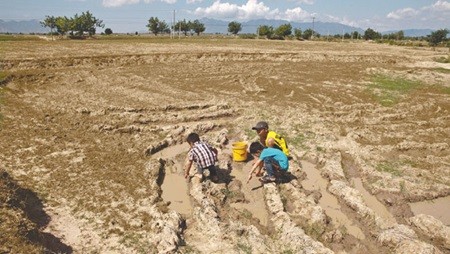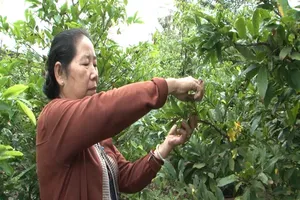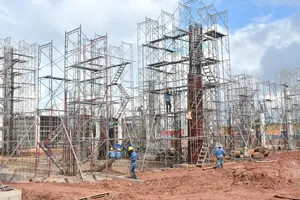Prime Minister Nguyen Tan Dung urged agencies to take measures to tackle the ongoing drought and saline intrusion in the central region at a Government meeting on Monday.

Dung asked the localities to examine water reservoirs and prepare plans for water usage, giving priority to local daily activities, animals and highly profitable crops.
He said it was essential to identify areas prone to water deficiencies and to prepare appropriate plans for drought-resistant crops.
Construction of irrigation facilities should also be sped up, he said.
The PM asked ministries and industrial sectors to save water at reservoirs to provide sufficient water for drought-hit areas during the dry season, stressing the need to support people in affected regions.
The central province of Ninh Thuan and the surrounding region, particularly the Central South and the Central Highlands, have been suffering from a serious drought since last year as the El Nino phenomenon reached one of its highest peaks in decades.
Cao Duc Phat, Minister of Agriculture and Rural Development, said Binh Thuan, the province most affected by extreme weather, lost more than 15,000ha of rice paddy fields, or about 40 per cent of the province's total amount, due to water shortages.
Khanh Hoa and Ninh Thuan provinces suffered losses of about 10,000 and 5,000ha, respectively, in the prolonged drought, he added.
The peak dry season falls in April, and around 180,000 ha of farm land will suffer from water shortage, of which coffee cultivation accounts for 100,000 ha, according to Phat.
The Central Highlands province of Dak Lak is most affected by household water shortage with around 25,000 families lacking household water.
Tran Quoc Nam, vice chairman of Ninh Thuan Province's People's Committee, said that production on nearly 6,000 ha of land had been suspended because of water shortage for the winter-spring crop.
Similarly, in Duc Linh District, the area with the largest rice cultivation area in Binh Thuan, is suffering from serious drought.
Farmers in Vo Xu Town in Duc Linh District said if the water shortage continued until next week, more than 800 ha of rice would be seriously affected.
"My family members took turns coming to the rice paddy fields to wait for the water but there was nothing. We have spent most of our money here. We have no idea how we are going to live," said Nguyen Thi Thanh Lan, a resident in Nam Chinh Commune in Duc Linh District.
In addition, Ham Thuan Bac District is also suffering from drought with some 7,000 ha of rice field had to stop production. Ham Tri Commune is the most affected area with more than 1,000 ha affected.
Household water shortage
During the last four months, more than 200 households in Nhon Hai Commune in Ninh Hai District in Ninh Thuan Province had to buy household water priced at VND70,000 (US$3) per cubic metre.
For washing and cleaning, people have to travel far away to take water from streams and canals.
"We tried to save water, but it costs between VND300,000-400,000 ($13-17) per month to buy water for drinking. Most people in the commune are poor so this is such a large amount of money," said Phan Van Hoang, a resident in the commune.
In Phuoc Diem Commune in Thuan Nam District, more than 4,000 people also have the same issue. They have to buy water from Phan Rang-Thap Cham city with VND80,000-90,000 ($3.5-4) per cubic metre.
Nguyen Minh Hung, of Thang My Water Supply Division, said the water supply factory with a capacity of 1,000 cubic metres per day had suspended operation because the water from Co Kieu dam had run out.
Luong Thanh Chau, of Binh Thuan Centre for Clean Water and Environment, said Tan Minh water supply plant would suspend operations.
If the acute drought continues, other water supply facilities in Tuy Phong and Ham Thuan Bac districts would also suspend operation.
More than 40,000 households in Binh Thuan Province are suffering from water shortage. The figure is expected to rise daily, according to the local government.
According to statistics from the Ministry of Agriculture and Rural Development, the central region, especially Ninh Thuan Province, has experienced seven serious droughts with high losses during the last two decades.
The drought in 2005 caused a damage of nearly VND135 billion ($6.05 million) and more than 27,000 people were affected.
The drought in 2014-15 was the worst, affecting more than 30,000 tonnes rice and sweet corn. More than 100,000 people suffered from household water shortage.
Some 150,000 cow, goat and sheep lacked water, and hundreds of them died, with thousands of them in critical condition.
























